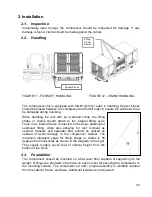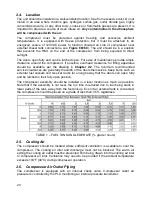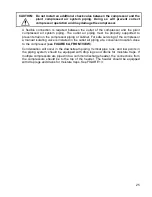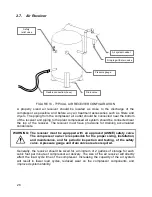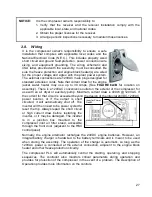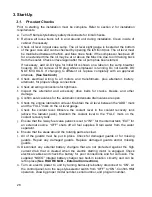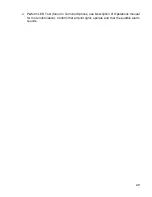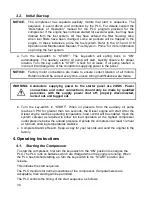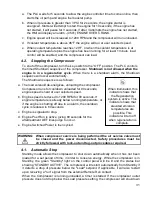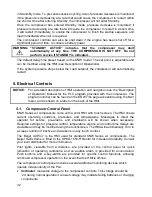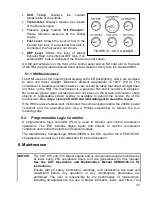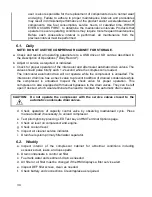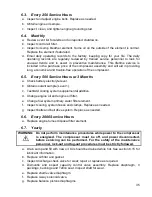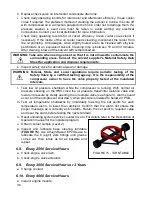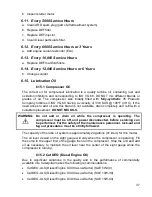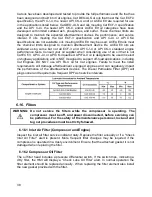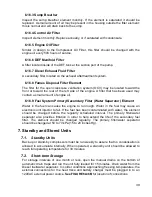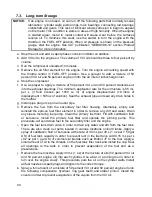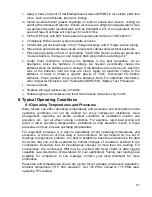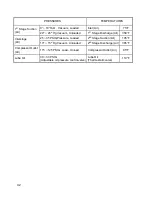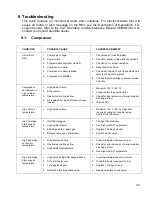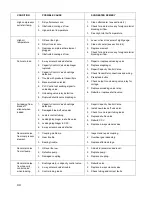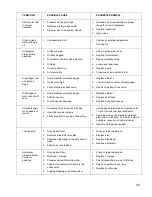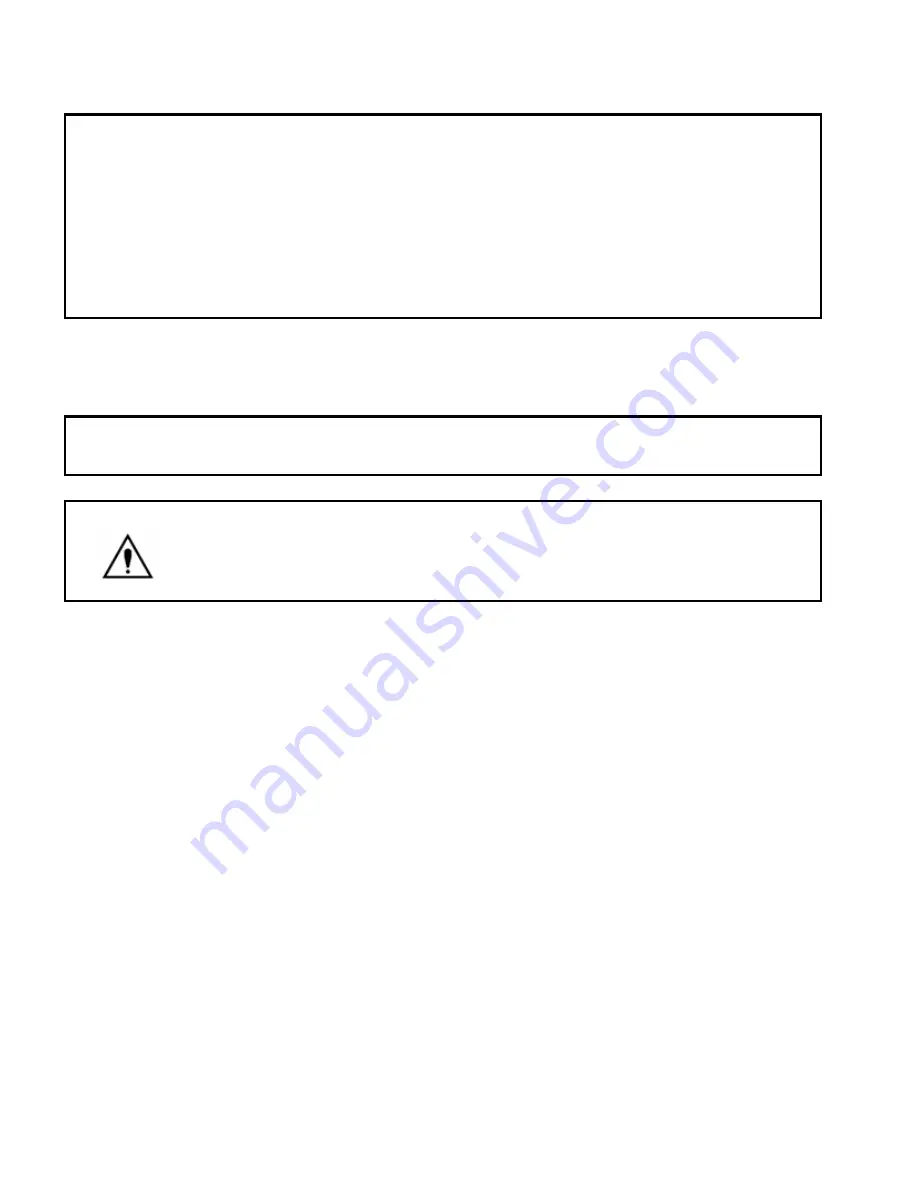
30
3.2. Initial Start-up
NOTICE:
The compressor has separate auxiliary motors that start in sequence. The
sequence is event driven and controlled by the PLC. For details consult the
“Description of Operation” manual for the PLC program provided for the
compressor. If the engine has not been started for several weeks, fuel may have
drained from the fuel system. Air may have entered the filter housing. Also,
when fuel filters have been changed, some air pockets will be trapped in the
engine. In these instances, prime the fuel system. Refer to the C15 and C18
Operation and Maintenance Manual, “Fuel System - Prime” for more information
on priming the fuel system.
a. Turn the key-switch to “START”. The key-switch will spring back to “ON”
automatically. The auxiliary electric oil pump will start. Quickly observe for proper
rotation. Turn the key switch to “STOP”. Check for oil leaks. If oil pump rotation is
incorrect interchange two of the conductors supplying power to the panel.
NOTICE:
Factory motor connections are made to ensure correct rotation of all motors.
Rotation should be correct every time, unless wiring modifications were made.
WARNING:
Conductors supplying power to the starter panel are 24VDC. Power
connections and motor connections should only be made by qualified
personnel, with the supply power shut off; properly disconnected,
locked out, and tagged out.
b. Turn the key-switch to “START”. When oil pressure from the auxiliary oil pump
reaches 3 PSI for greater than two seconds, the Diesel engine will start. After the
Diesel engine reaches operating temperature, load control will be enabled. Open the
system valve(s) as required to allow full load operation at the highest compressor
outlet pressure below the unload pressure. Operate the compressor at least 1/2 hour
at full load, allowing temperatures stabilize.
c. Complete Start-Up Report. Keep a copy for your records and send the original to the
factory.
4. Operating Instructions
4.1. Starting the Compressor
To start the compressor, first turn the key-switch to the “ON” position to energize the
PLC. The PLC runs on batteries which are charged when the engine is running. When
the PLC has finished starting up, turn the key-switch to the “START” position and
release.
This initiates the start sequence.
The PLC monitors for normal conditions of the compressor. If all parameters are
acceptable, then starting will be permitted.
The PLC controls the timing of the start sequence, as follows:








